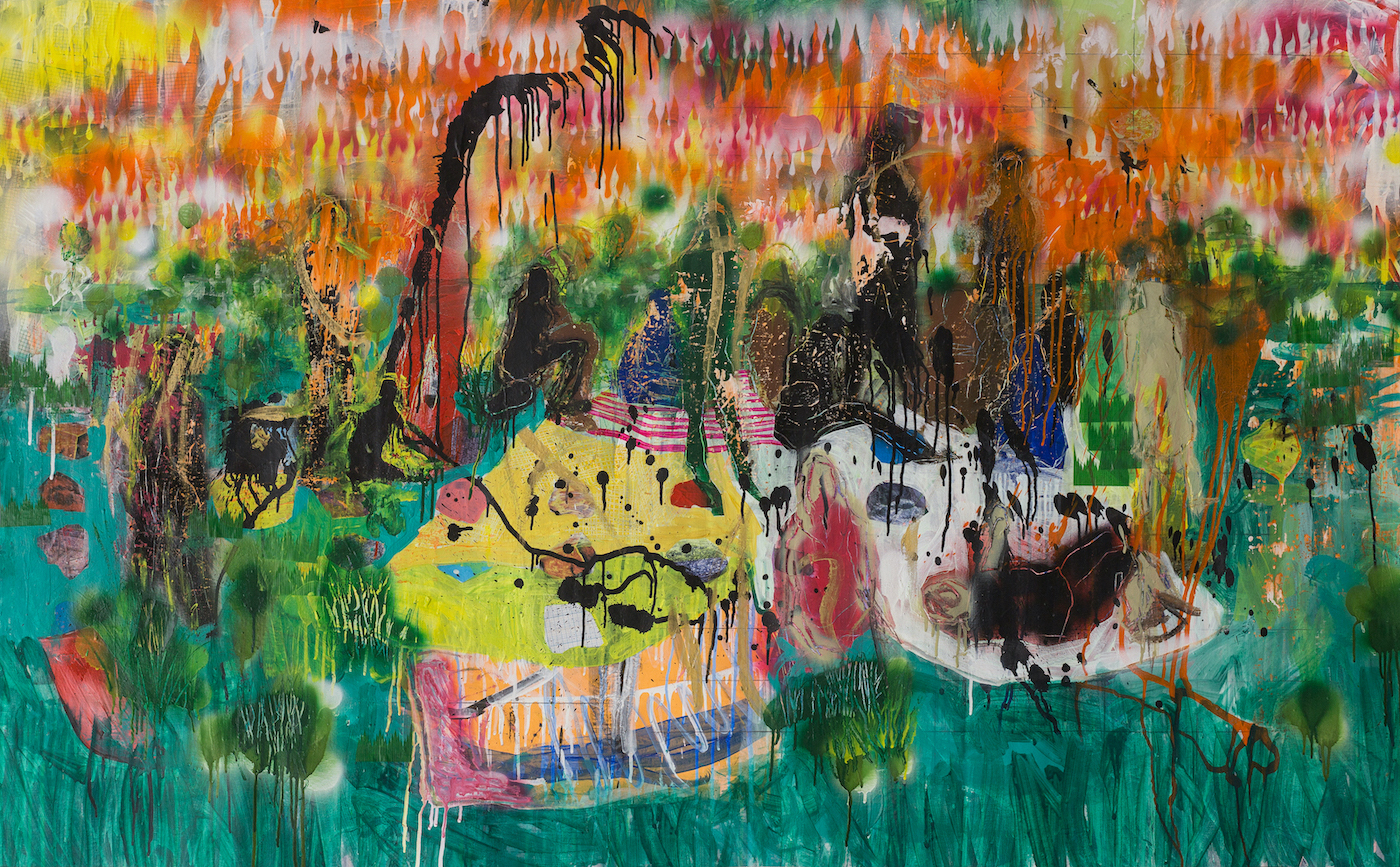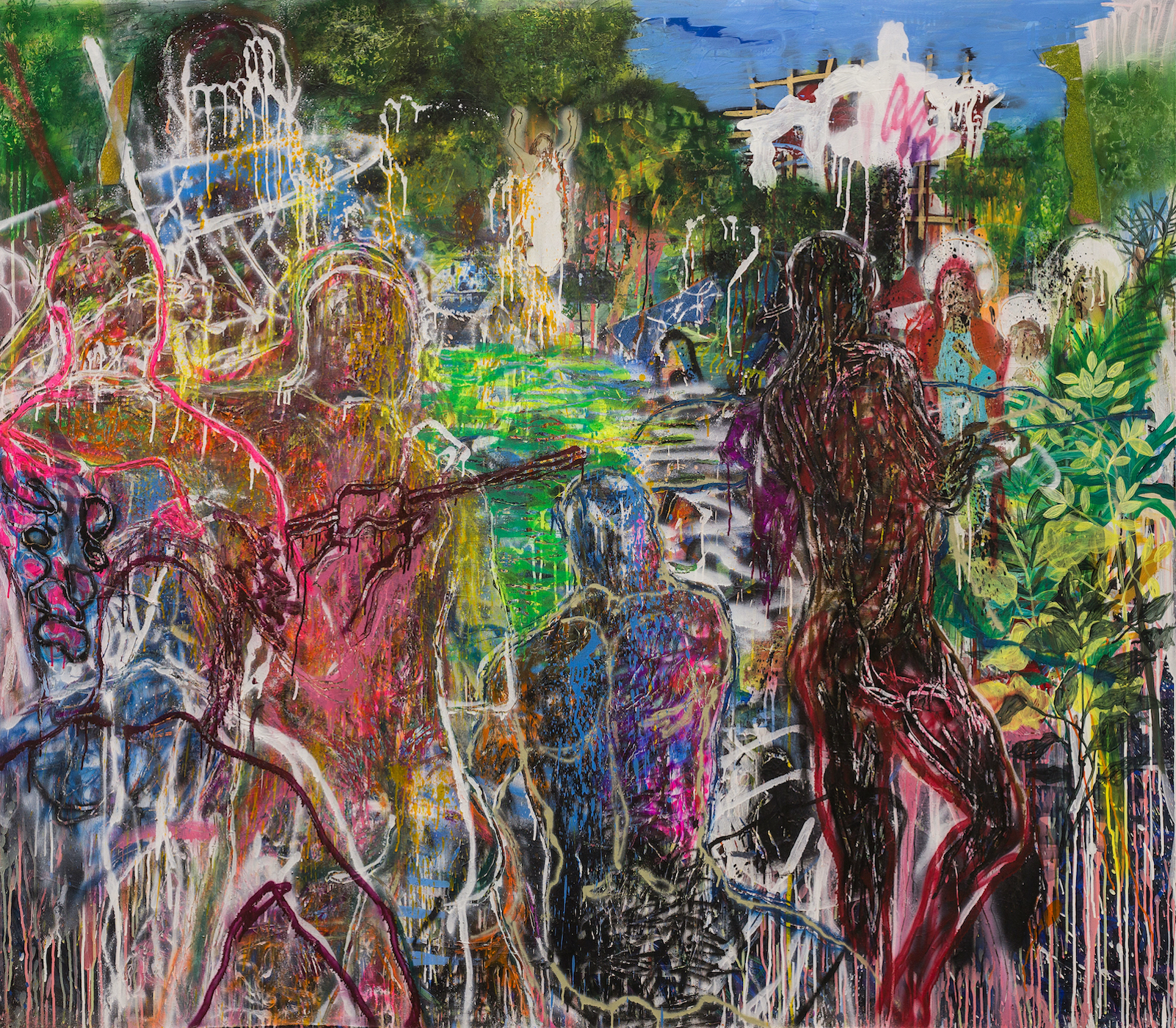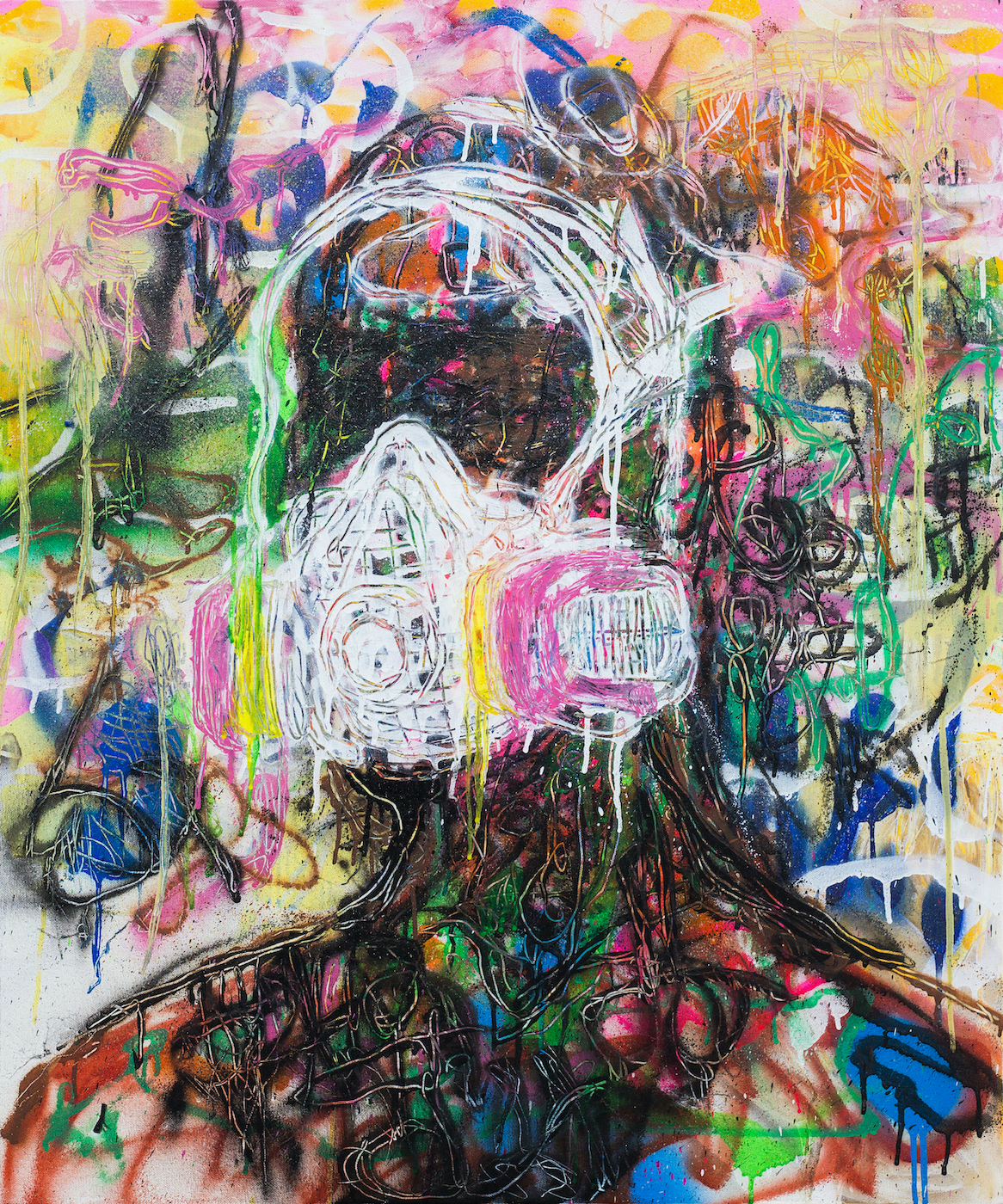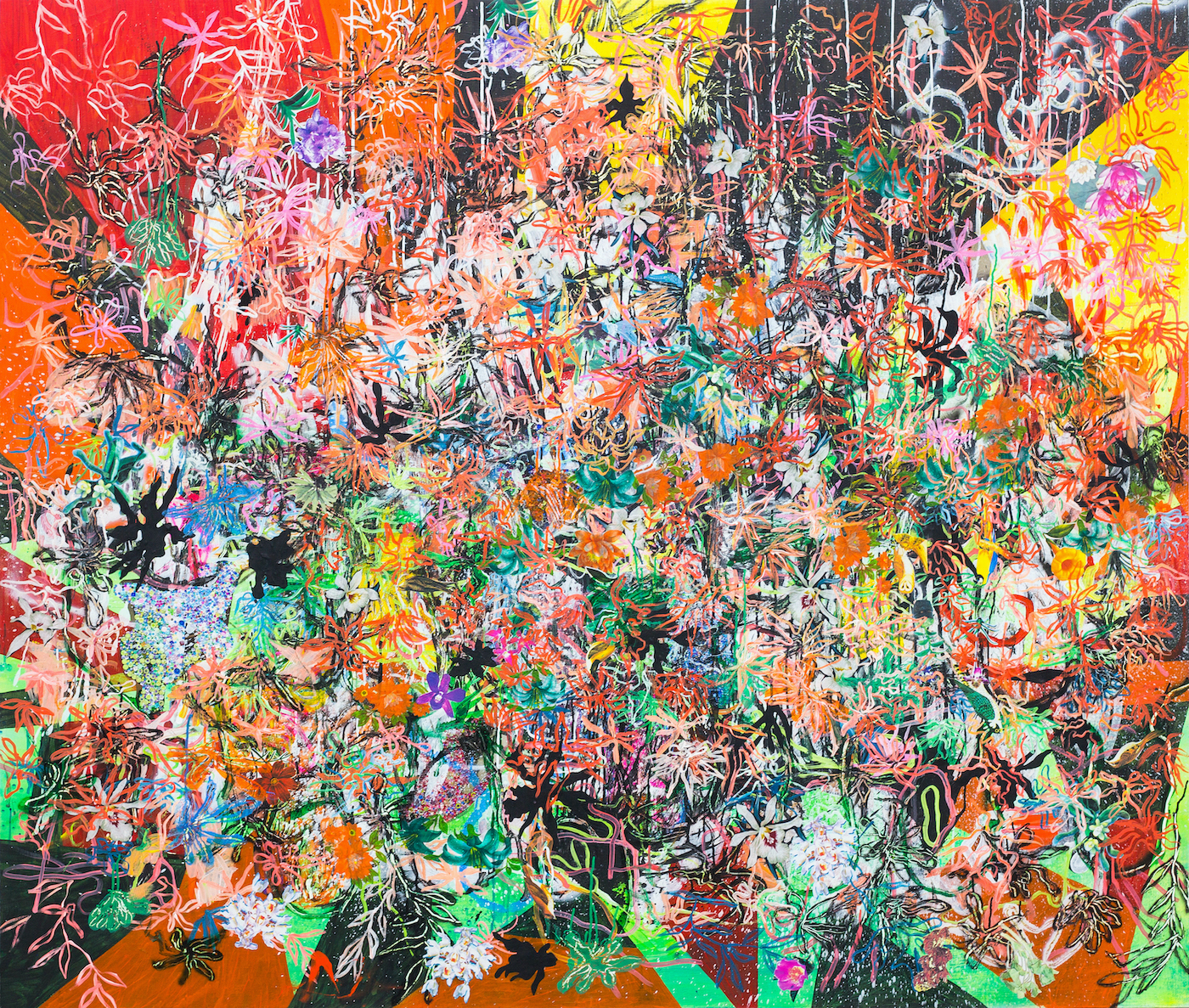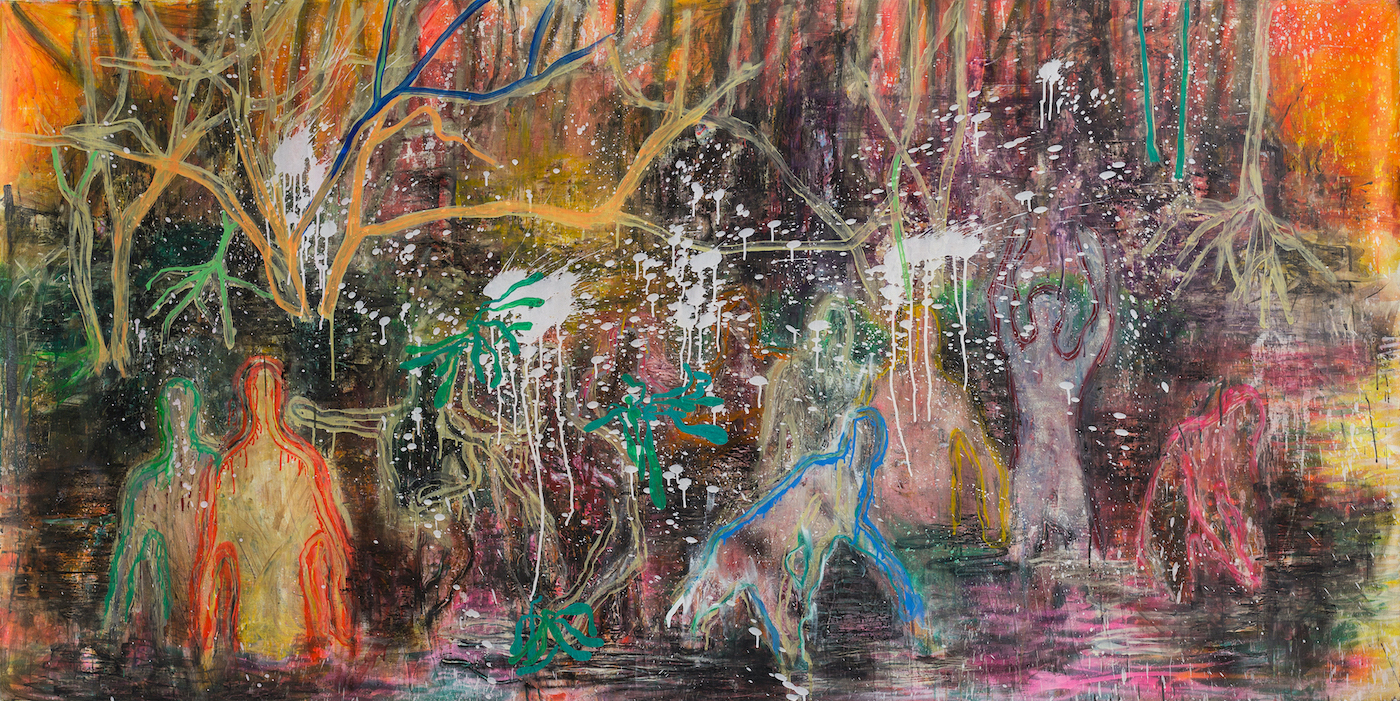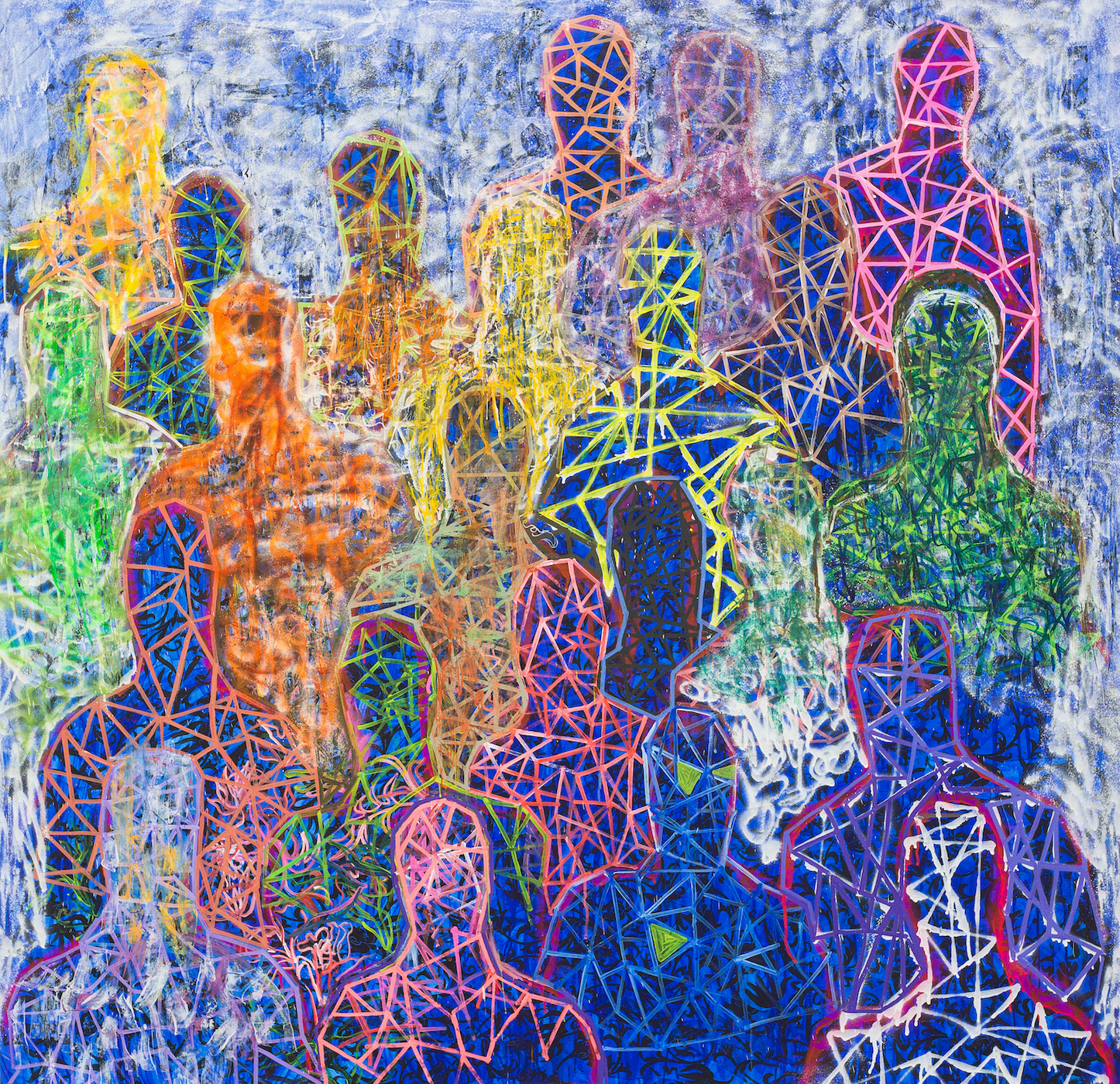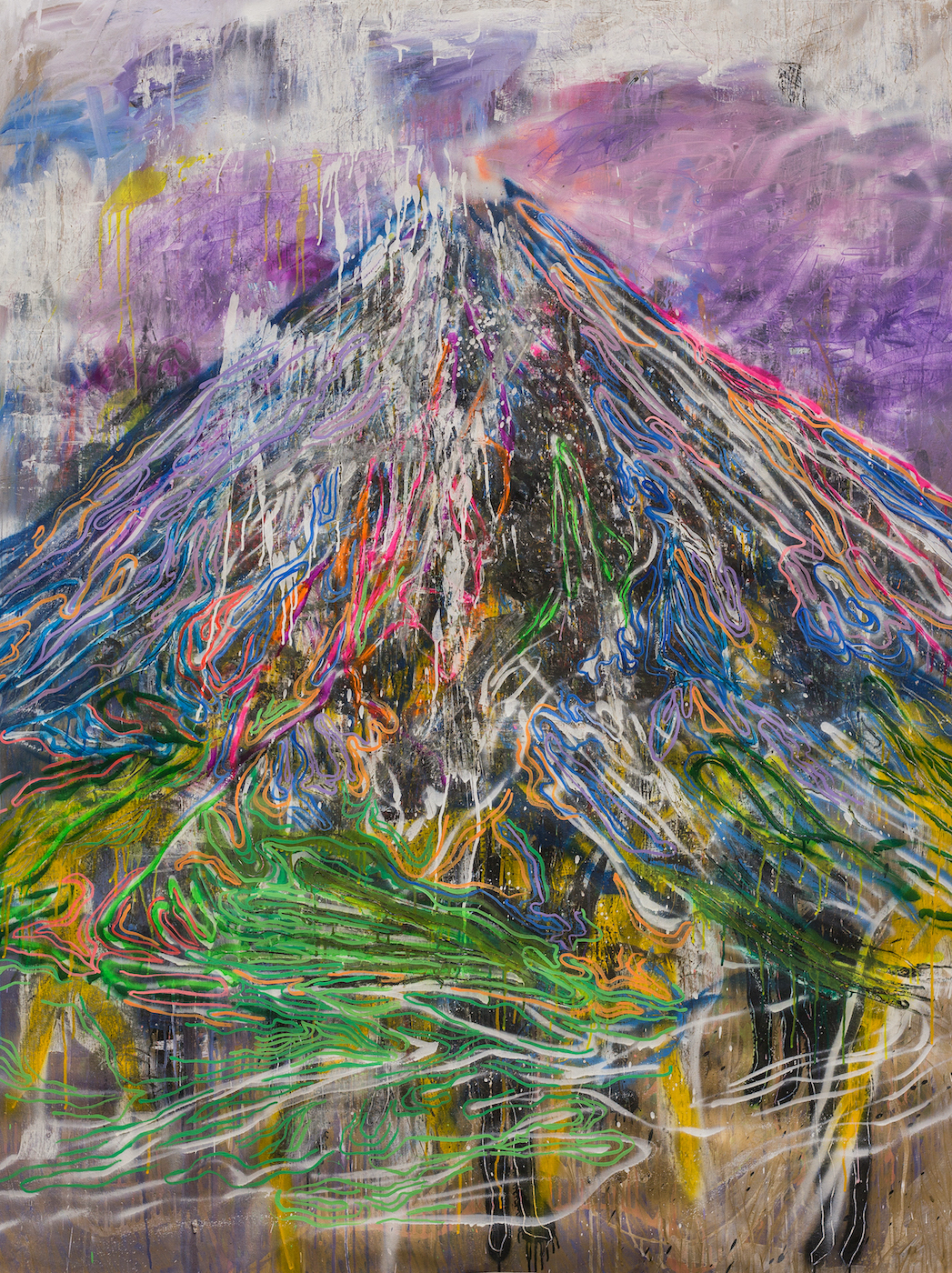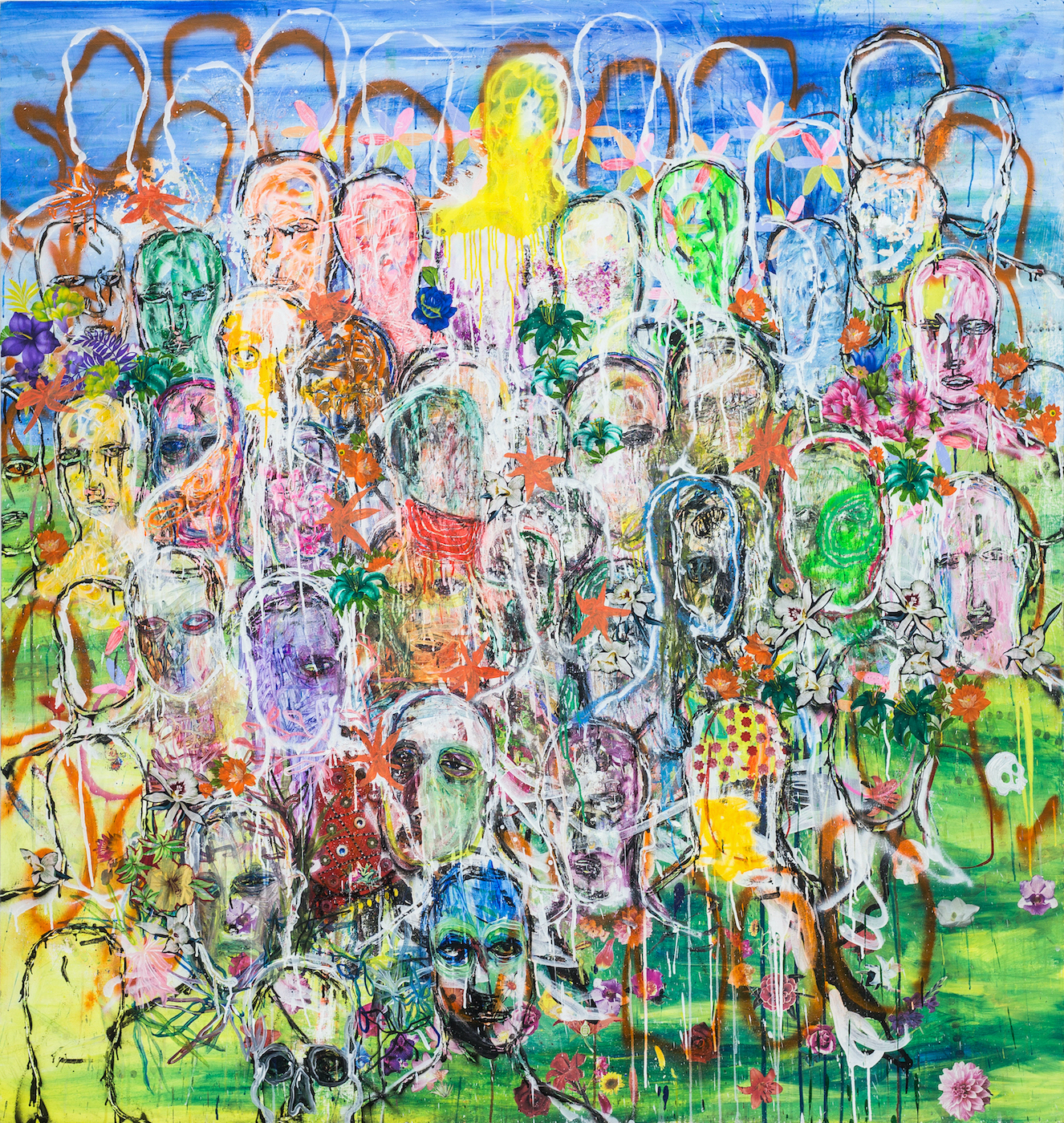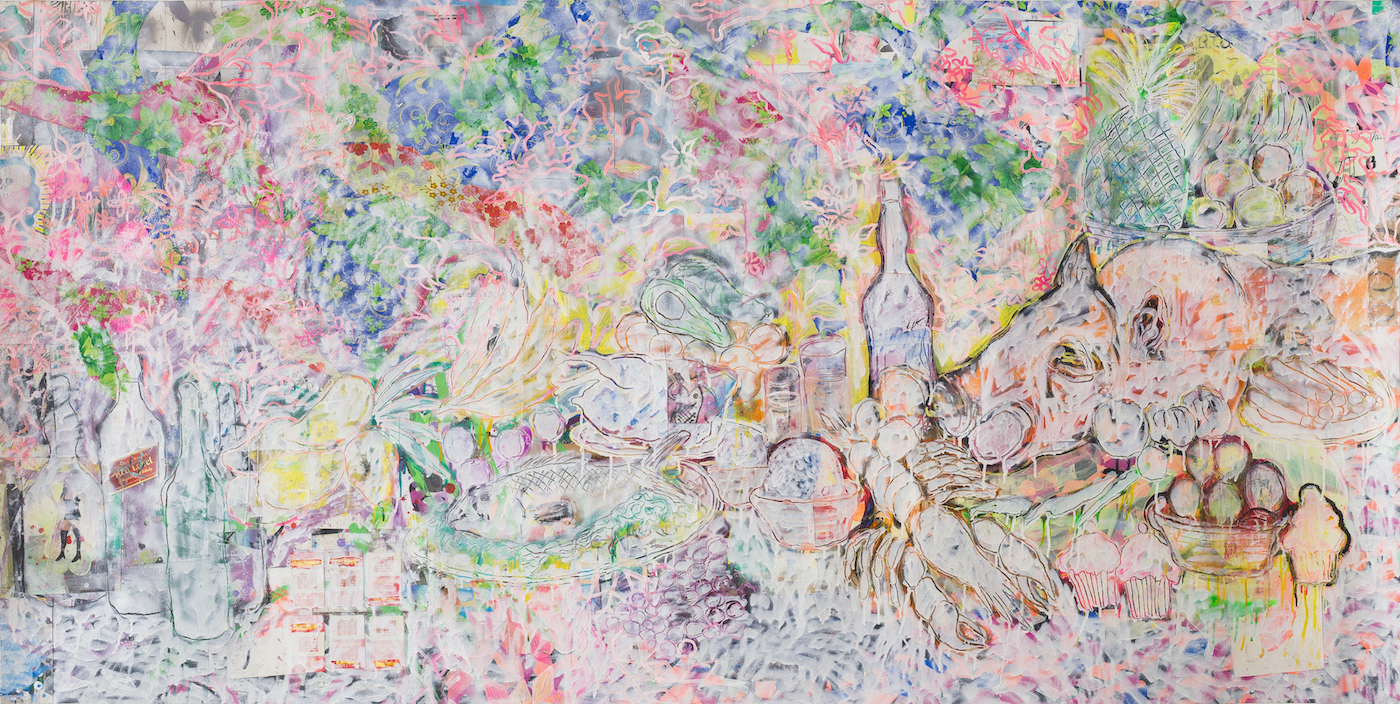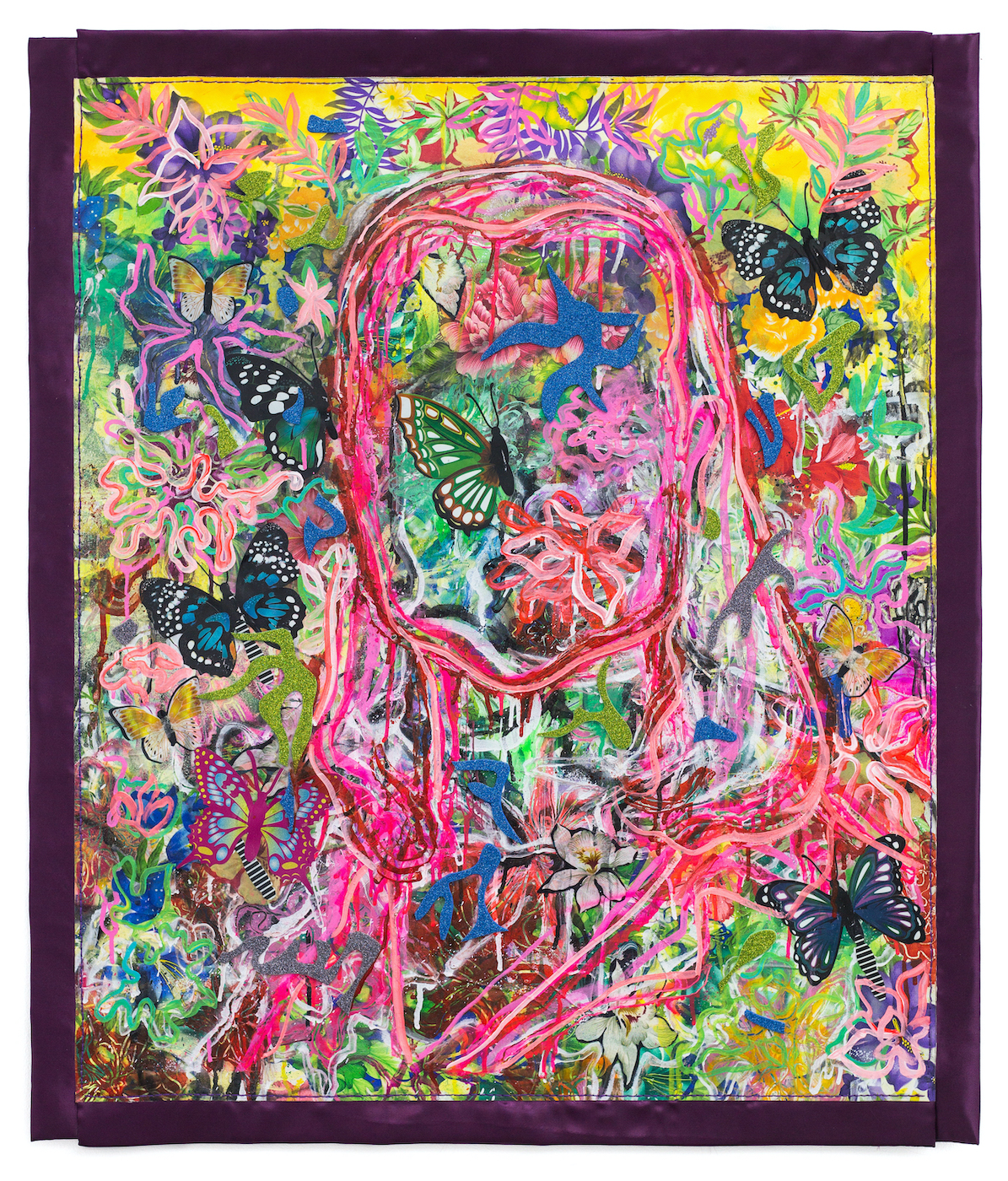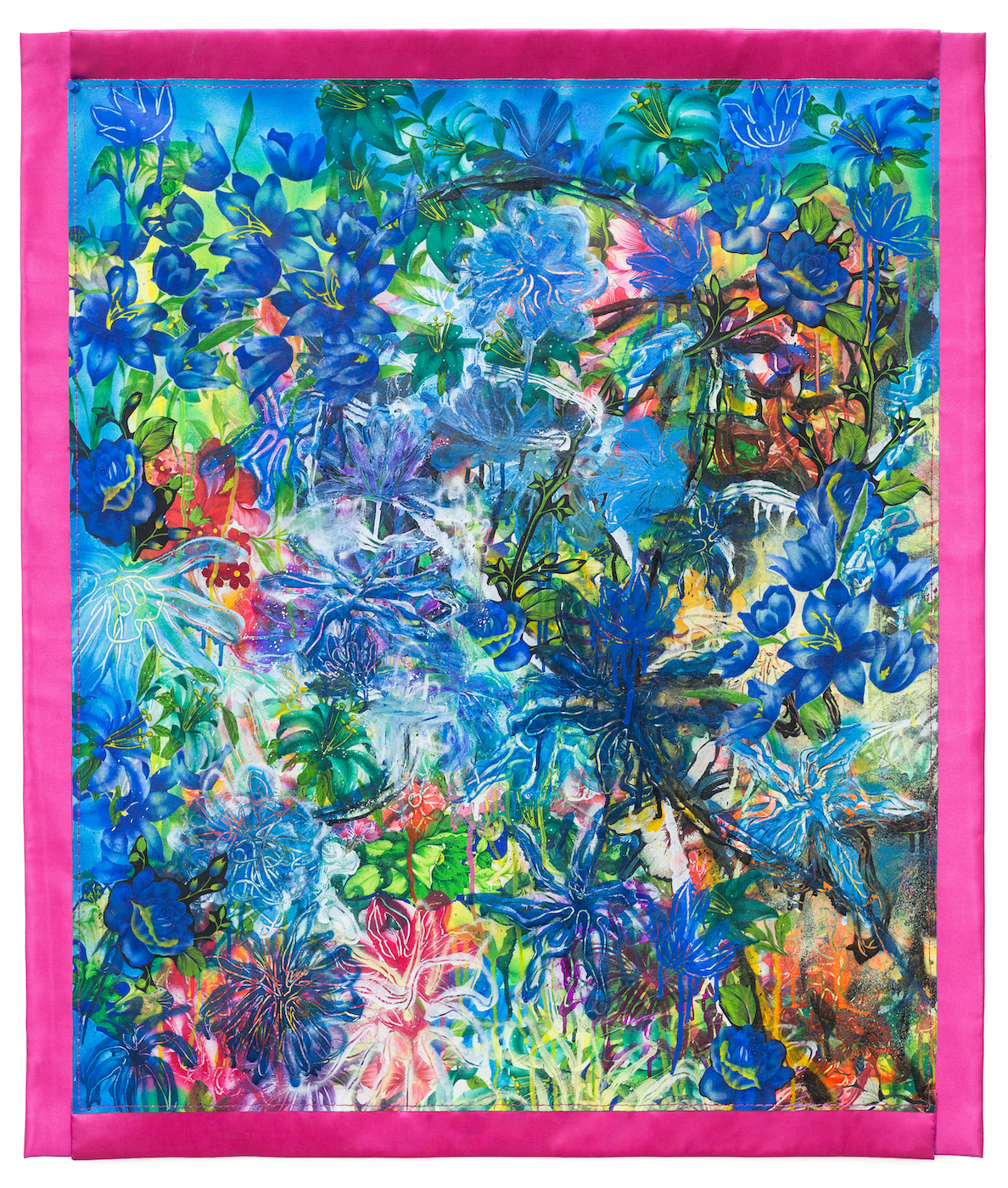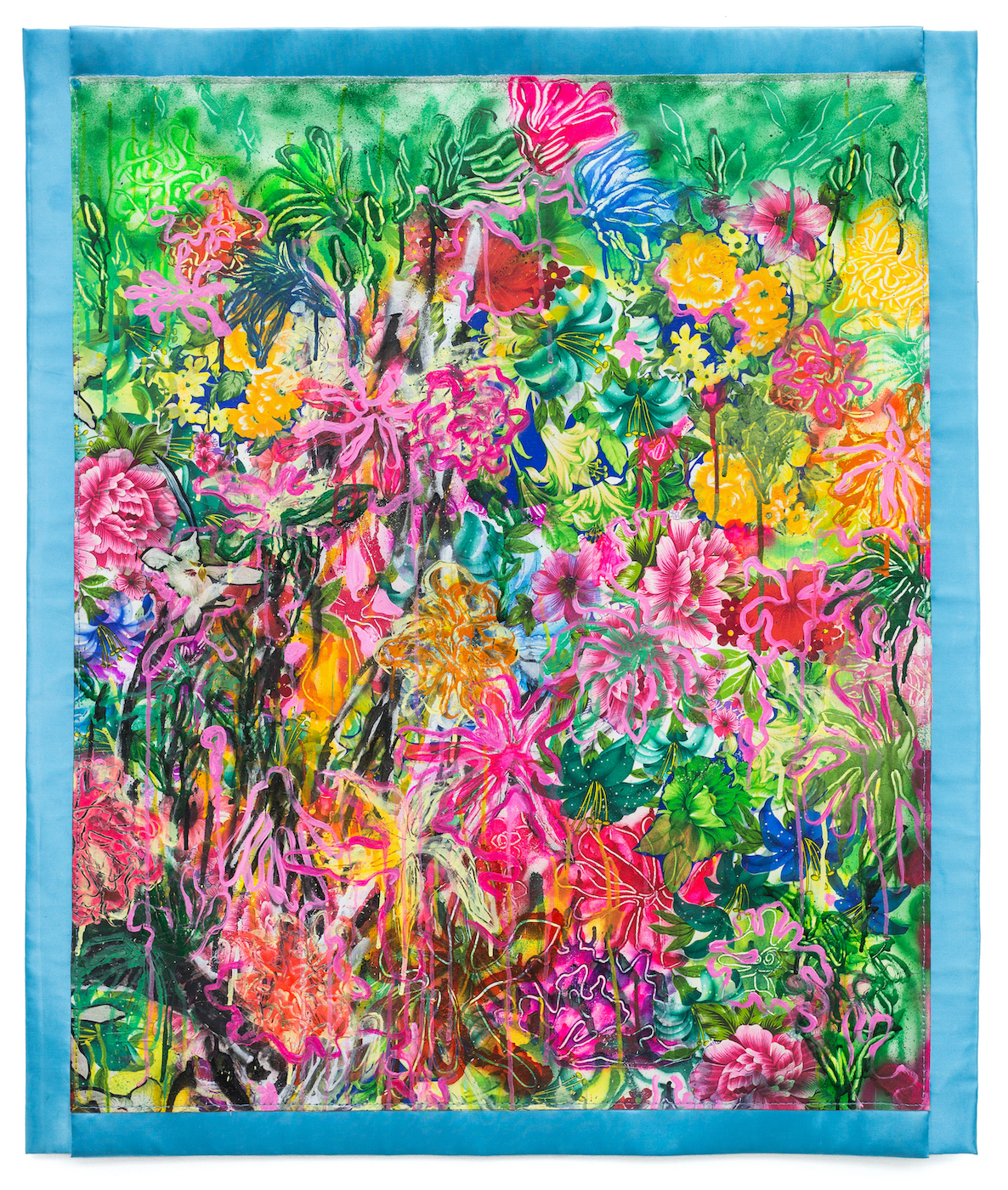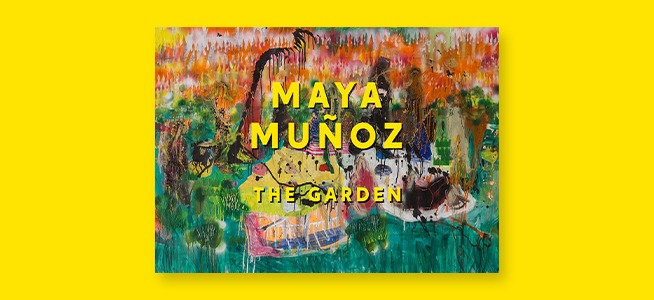
THE GARDEN
Maya Muñoz
Silverlens, Manila
Installation Views
About
Beauty, as is often said, lies in the eye of the beholder, and to look deeper into the nature of beauty is to descend into a territory of shadows. The pieces in THE GARDEN rest somewhere in that state-- a narrow chasm of dualities: light and dark, joy and sadness, serenity and chaos. There is the quiet idle of a lazy afternoon picnic in “Everywhere There You Are” and the explosive moment in “Fugue”. There is an unpossessable feast in “August Banquet” and the dizzying chaos of “Floral Brute”. Grotesque shapes make up the “Feral Garden” in super multi toxic tropical neon, each element existing next to the other in perfect discord. They are images of illusory moments that are unresolved, strange, restless and by default can be sinister. THE GARDEN is a bold, complicated and colorful world that evokes the beautiful and grotesque co-existing side by side. It is a world of materiality and the present; transient, illusory and ever changing. It is the everyday life: banal, mundane yet somehow also magical.
Q&A with Maya Muñoz
The paintings in THE GARDEN were made within a six-month period in 2019.
The following were some of the most frequently asked questions by people who viewed the show in the gallery, the studio and online.
Q: Why is AUGUST BANQUET partially concealed in white?
A: There is something poignant for me about August Banquet. I wanted to conceal it partially with white because it is an impossible piece, an incomplete memory, fleeting and cannot be coveted.
Q: Please explain the title FLORAL BRUTE.
A: The title comes from how it is painted: brutally. The subject matter being these delicate flowers are complete opposite to the paint handling which is severe, dynamic and violent. I like how Georgia O’Keefe painted her flowers so elegantly; I wanted to do the opposite.
Q: The most intriguing title is IN THE FERAL GARDEN, THE MEANEST KISSES ARE SOLD IN TIMES OF FAMINE. Can you please tell me more about this? The figure in the painting strongly resembles Jesus Christ.
A: In one of my earlier pieces, I painted a crucified Black Nazarene on an altar setting full of plants and flowers. I wanted to re-imagine him as St. Augustine, a sinner saint. He is not really Christ but more man: definitely a sinner, definitely in need of salvation. The title to me means having too much of something that you don’t need at the time. Feral Garden can be an allusion to a letting go of or an untamed wild state of something that should have been kept maintained and somewhat curated or controlled. The phrase “meanest kisses sold in times of famine” makes no sense. I heard it said by David Berlinski as something that made no sense, yet sometimes a thing makes no sense until it does. It’s all about context.
Q: Why did you decide to focus on gardens for this series?
A: There was no intention of doing gardens in the beginning. The title came to me after I stopped working and I could step back and just look at the whole output. It just so happened that I watched a documentary on Alexander McQueen and they showed clips of one of his shows called Savage Beauty. It clicked. The way I paint is very abstract expressive and the subject matter was primal and floral. Very floral. So I decided to title the series The Garden. Really it is a “savage garden” but that sounded a bit much. So just The Garden.
Q: Why are the bohemians lonely when there are so many of them crowded together in the painting?
A: The painting is based on James Ensor’s “The Masks”. I couldn’t work out the composition for what I wanted to portray so I used Ensor’s “The Masks” as a template. There is a haunting desolation to crowded places-- places full of people together but alone.
Q: You were a volunteer during the making of “Everywhere There You Are” by your friends Christina Quisumbing Ramilo and Wawi Navarozza. How did it feel to paint the work of your artist friends, especially a work that you helped build?
A: I wanted to paint that feeling of togetherness. The figures are spaced out more because the scene is about the togetherness of strangers who just so happen to be in the same place at the same time for the same thing. Like putting different elements or images in the same canvas that don’t directly relate to one another, but they are all in one canvas so together they become a new thing. I remember that while painting the piece, I wanted the composition to suggest a separateness and togetherness at the same time. It is also a picnic, a relaxed moment. Idyllic. And the background had to have the impression of the work Wawi and Ling created for Arete.
Q: The gardens are lively and beautiful, yet one senses the presence of darkness. Perhaps some danger lurking within. Am I correct in assuming that these are not just pretty, peaceful gardens?
A: There is darkness in everything. The greater the darkness, the more seductive it is. The principle of opposing elements is a governing force in creation. Things become clear through their opposites: light and dark, transient and lasting, joy and sadness, monstrosity and beauty. These are powerful emotions that I want to give to the works. Sometimes it happens. Most of the time it does not.
Q: I see are glued-on fabrics, sequins, glitter and other materials. Why do you add these to your canvas?
A: I tend to play around with what are in my studio. I have many things in my studio. I add them to my canvases because I work very organically and sometimes see something that I would like to try working into the painting. I also tend to reuse old canvases, and some of the “crap” I had on there before tend to become part of the new piece. If it works, I leave it.
Born in 1972 in Albay province in the Bicol region, Philippines, Maya Muñoz is a mixed media artist. Her works tend to be figurative and expressive and at othertimes abstract and minimal. She has a studio in both Manila and her hometown province of Albay as she considers both places her creative source, between the volcanic landscape and the sea and the chaotic buzz of Manila. She deems herself reclusive and her creative psyche forever rooted in this unpredictable and mercurial landscape.
Muñoz is a graduate of San Jose State University, California, USA. She has participated in numerous group shows in the Philippines, Singapore, UAE, China and the USA. She has been collected in Indonesia, France, Singapore, Philippines, United States, Portugal, amongst others. In 2006, she was awarded the prestigious 3rd Ateneo Art Award, Philippines and in 2010 presented Extensions, a monumental solo exhibition at Lopez Museum, Philippines.
Works
